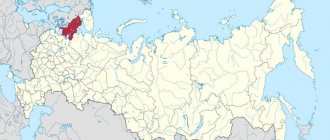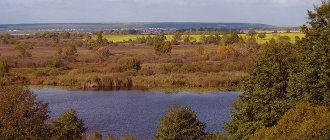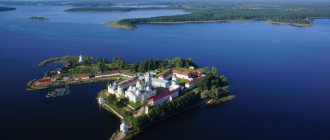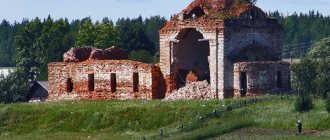Holiday calendar, signs, dates and events for every day of the year - folk calendar, Orthodox calendar, church calendar, eastern calendar, astrological calendar, lunar calendar, industrial calendar, as well as state and professional holidays, including significant World and International holidays and public holidays , folk holidays and omens, and other equally interesting and unusual holidays, dates and events of the year, zodiac signs, dream books and much more.
Calendar for 2022
| January | ||||||
| Mon | W | Wed | Thu | Fri | Sat | Sun |
| February | ||||||
| Mon | W | Wed | Thu | Fri | Sat | Sun |
| March | ||||||
| Mon | W | Wed | Thu | Fri | Sat | Sun |
| April | ||||||
| Mon | W | Wed | Thu | Fri | Sat | Sun |
| May | ||||||
| Mon | W | Wed | Thu | Fri | Sat | Sun |
| 1 | ||||||
| 2 | 3 | 4 | 5 | 6 | 7 | 8 |
| 9 | 10 | 11 | 12 | 13 | 14 | 15 |
| 16 | 17 | 18 | 19 | 20 | 21 | 22 |
| 23 | 24 | 25 | 26 | 27 | 28 | 29 |
| 30 | 31 | |||||
| June | ||||||
| Mon | W | Wed | Thu | Fri | Sat | Sun |
| 1 | 2 | 3 | 4 | 5 | ||
| 6 | 7 | 8 | 9 | 10 | 11 | 12 |
| 13 | 14 | 15 | 16 | 17 | 18 | 19 |
| 20 | 21 | 22 | 23 | 24 | 25 | 26 |
| 27 | 28 | 29 | 30 | |||
| July | ||||||
| Mon | W | Wed | Thu | Fri | Sat | Sun |
| 1 | 2 | 3 | ||||
| 4 | 5 | 6 | 7 | 8 | 9 | 10 |
| 11 | 12 | 13 | 14 | 15 | 16 | 17 |
| 18 | 19 | 20 | 21 | 22 | 23 | 24 |
| 25 | 26 | 27 | 28 | 29 | 30 | 31 |
| August | ||||||
| Mon | W | Wed | Thu | Fri | Sat | Sun |
| 1 | 2 | 3 | 4 | 5 | 6 | 7 |
| 8 | 9 | 10 | 11 | 12 | 13 | 14 |
| 15 | 16 | 17 | 18 | 19 | 20 | 21 |
| 22 | 23 | 24 | 25 | 26 | 27 | 28 |
| 29 | 30 | 31 | ||||
| September | ||||||
| Mon | W | Wed | Thu | Fri | Sat | Sun |
| 1 | 2 | 3 | 4 | |||
| 5 | 6 | 7 | 8 | 9 | 10 | 11 |
| 12 | 13 | 14 | 15 | 16 | 17 | 18 |
| 19 | 20 | 21 | 22 | 23 | 24 | 25 |
| 26 | 27 | 28 | 29 | 30 | ||
| October | ||||||
| Mon | W | Wed | Thu | Fri | Sat | Sun |
| 1 | 2 | |||||
| 3 | 4 | 5 | 6 | 7 | 8 | 9 |
| 10 | 11 | 12 | 13 | 14 | 15 | 16 |
| 17 | 18 | 19 | 20 | 21 | 22 | 23 |
| 24 | 25 | 26 | 27 | 28 | 29 | 30 |
| 31 | ||||||
| November | ||||||
| Mon | W | Wed | Thu | Fri | Sat | Sun |
| 1 | 2 | 3 | 4 | 5 | 6 | |
| 7 | 8 | 9 | 10 | 11 | 12 | 13 |
| 14 | 15 | 16 | 17 | 18 | 19 | 20 |
| 21 | 22 | 23 | 24 | 25 | 26 | 27 |
| 28 | 29 | 30 | ||||
| December | ||||||
| Mon | W | Wed | Thu | Fri | Sat | Sun |
| 1 | 2 | 3 | 4 | |||
| 5 | 6 | 7 | 8 | 9 | 10 | 11 |
| 12 | 13 | 14 | 15 | 16 | 17 | 18 |
| 19 | 20 | 21 | 22 | 23 | 24 | 25 |
| 26 | 27 | 28 | 29 | 30 | ||
Designations in the calendar: X - holidays; X—weekends; X - reduced working day by 1 hour;
Administrative-territorial division of the Komi Republic
Administrative units on the territory of the modern Komi Republic in 1914
Before the October Revolution, the territory of the present Komi Republic was mainly divided between Ust-Sysolsky and Yarensky districts of the Vologda province and Pechora district of the Arkhangelsk province. Small territories were also included in the Solvychegodsky district of the Vologda province, the Mezensky district of the Arkhangelsk province, the Oryol district of the Vyatka province and the Cherdynsky district of the Perm province[19].
In the summer of 1918, Ust-Sysolsky, Yarensky and Solvychegodsky districts were transferred to the newly formed North Dvina province. At the same time, the eastern volosts of the Ust-Sysolsky district, covering the upper reaches of the Pechora, were transferred to the Cherdynsky district of the Perm province, and the Pysskaya volost of the Mezensky district was transferred to the new Ust-Vashsky district[20].
JSC Komi (Zyryan)
By decree of the All-Russian Central Executive Committee of August 22, 1921, the Autonomous Region of Komi (Zyryan)
within the RSFSR.
According to the decree, it included: Pechora district with the exception of Pustozersk and Ust-Tsilomskaya volosts and the territory of the Timan Tundra; Ust-Sysolsky district as a whole; Chuprovskaya, Vashgortskaya, Selibskaya, Koslanskaya, Ertomskaya, Glotovskaya, Turinskaya, Onezhskaya, Knyazhpogostskaya, Sheshetskaya, Seregovogorskaya, Seregovskaya, Ibskaya, Chasovskaya, Prokofievskaya, Ust-Vymskaya, Aikinskaya, Gamskaya, Zheshartskaya, Kokvitskaya, Palevitskaya volosts of Yarensky district; Pysskaya volost with the village of Latyuga, Ust-Vash district. The city of Ust-Sysolsk was appointed as the center of the joint-stock company[21]. Komi JSC (Zyryan) in 1928
At the beginning of 1922, the Savinoborskaya, Troitsko-Pechora and Shchugerskaya volosts were transferred from the Cherdyn district of the Perm province to the Komi (Zyryan) JSC. On May 2, 1922, the All-Russian Central Executive Committee approved the administrative division of Komi JSC (Zyryan). It looked like this[20]:
| County | Center | Compound |
| Pechora district | With. Izhma | 25 parishes |
| Ust-Vymsky district | With. Ust-Vym | 21 parish |
| Ust-Kulomsky district | With. Ust-Kulom | 16 parishes |
| Ust-Sysolsky district | Ust-Sysolsk | 38 parishes |
However, already on May 27, 1922, it was decided not to include 6 “Russian” volosts in the lower Pechora and the Kaninskaya tundra into the Komi (Zyryan) joint-stock company - they were left as part of the Arkhangelsk province. In this regard, Pechora district was renamed Izhmo-Pechora[20].
On December 27, 1926, Ust-Sysolsky district was renamed Sysolsky.
In 1929, in the north of the European part of the RSFSR, the Northern Territory was formed with its center in Arkhangelsk, which included the Komi (Zyryan) joint-stock company. At the same time, the northeastern part of the Izhmo-Pechora district was transferred to the newly formed Nenets National District. At the same time, JSC Komi (Zyryan) received back the volosts in lower Pechora, as well as the Pyssky village council of the Mezen district. At the same time, a small area along the Letka River was transferred from the Vyatka province to the Komi (Zyryan) joint-stock company[20].
In the same year, the district division in Komi Autonomous Okrug (Zyryan) was replaced by a district one. Instead of 4 counties, 9 districts were created[20]:
- Vizingsky. Center - village Vizinga
- Izhmo-Pechorsky. Center - village Izhma
- Priluzsky. Center - village Obyachevo
- Storozhevsky. Center - village Storozhevsk
- Udorsky. Center - village Koslan
- Ust-Vymsky. Center - village Ust-Vym
- Ust-Kulomsky. Center - village Ust-Kulom
- Ust-Sysolsky. Center - Ust-Sysolsk
- Ust-Tsilemsky. Center - village Ust-Tsilma
Pechora district in 1938
In 1930, the Izhmo-Pechora district was renamed Izhemsky, and Sysolsky - Syktyvkarsky. The city of Ust-Sysolsk was renamed Syktyvkar. In the 1930s, part of the tundra territory in the north of the Komi Autonomous Okrug (Zyryan) was transferred to the Nenets NO.
The number of districts in Komi Autonomous Okrug (Zyryan) gradually grew. So, in 1931, the Troitsko-Pechora district with its center in the village was separated from the Ust-Kulomsky district. Troitsko-Pechorsk. In 1932, the Ust-Usinsky district with its center in the village was separated from the Izhemsky district. Ust-Usa.
On February 10, 1935, a new grid of districts of Komi Autonomous Okrug (Zyryan) was approved. The city of Syktyvkar was declared a city of regional subordination, while the Syktyvkar district was renamed Syktyvdinsky, and the village became its center. Vylgort; Vizingsky district was renamed Sysolsky; Letsky district with its center in the village was separated from the Priluzsky district. Letka[20].
On February 25, 1936, in the northeastern part of the Komi Autonomous Okrug (Zyryan), the Pechora District was formed, which included the Izhemsky, Ust-Usinsky and Ust-Tsilemsky districts. The village of Ust-Usa became the center of the district.
Komi ASSR
On December 5, 1936, Komi JSC (Zyryan) was transformed into the Komi Autonomous Soviet Socialist Republic and removed from the Northern Territory into direct subordination to the RSFSR.
The process of creating new districts continued. In 1939, the Zheleznodorozhny district was separated from the Ust-Vymsky district (the center is Zheleznodorozhny), from the Syktyvdinsky and Storozhevsky - the Kortkerossky district (the center is the village of Kortkeros), from the Izhemsky and Storozhevsky - the Ukhtinsky district (the center is the village of Ukhta) [20] .
In 1941, the Pechora district was abolished. Its districts were transferred to the direct subordination of the Komi Autonomous Soviet Socialist Republic. At the same time, the Kozhvinsky district with its center in the village of Kozhva was separated from the Ust-Usinsky district. In 1943, the Vorkuta City Council was separated from the Kozhvinsky district.
As a result, by July 1, 1945, the ATD of the Komi ASSR looked like this[22]:
| Area | Center | Compound |
| Syktyvkar | Syktyvkar | 1 city, 2 villages |
| Vorkuta | Vorkuta | 1 city |
| Zheleznodorozhny district | RP Zheleznodorozhny | 2 rp, 6 s/s |
| Izhemsky district | With. Izhma | 12 s/s |
| Kozhvinsky district | With. Kozhva | 4 rp, 7 s/s |
| Kortkeros district | With. Kortkeros | 8 s/s |
| Letsky district | With. Letka | 9 s/s |
| Priluzsky district | With. Obyachevo | 8 s/s |
| Storozhevsky district | With. Storozhevsk | 10 s/s |
| Syktyvdinsky district | With. Vylgort | 1 rp, 12 s/s |
| Sysolsky district | With. Vizinga | 1 rp, 15 s/s |
| Troitsko-Pechorsky district | With. Troitsko-Pechorsk | 6 s/s |
| Udora district | With. Koslan | 10 s/s |
| Ust-Vymsky district | With. Aikino | 10 s/s |
| Ust-Kulomsky district | With. Ust-Kulom | 14 s/s |
| Ust-Usinsky district | With. Ust-Usa | 5 s/s |
| Ust-Tsilemsky district | With. Ust-Tsilma | 9 s/s |
| Ukhtinsky district | Ukhta | 1 city, 3 rp, 4 s/s |
In 1949, 2 new districts were formed: from the Sysolsky district the Koygorodsky district was separated (the center is the village of Koygorodok), and from the Ust-Kulomsky - the Pomozdinsky district (the center is the village of Pomozdino). In the same year, 2 village councils of the Nyrobsky district of the Molotov region were annexed to the Troitsko-Pechora district, and the Veslyansky forest dachas were transferred from the Ust-Kulomsky district to the Komi-Permyatsky national district[20].
In 1953, from part of the Kozhvinsky district, the Inta district was formed with its center in the Inta district. The city of Ukhta was transformed into a city of republican subordination and removed from the Ukhta region. In total, by 1956, the Komi ASSR had 19 districts and 3 cities of republican subordination. In 1957 (according to other sources - 1959), the villages of Halmer-Yu and Tsementozavodsky with the adjacent territory were transferred to the Vorkuta City Council from the Nenets National District[23].
On December 13, 1957, the Ukhta district was annexed to the Ukhta city council, but the Ukhta district remained as a territorial unit. On April 27, 1959, Kozhvinsky district was renamed Pechora district. At the same time, the territory of the abolished Ust-Usinsk region was annexed to it[23].
In 1963, great changes took place in the ATD of the Komi ASSR. The Inta and Ukhta districts were abolished, and their territories were subordinated to the corresponding city councils. Pomozdinsky, Storozhevsky and Ust-Kulomsky districts were united into the Ust-Kulomsky industrial region. Koygorodsky and Sysolsky districts are united into the Sysolsky industrial district. The Zheleznodorozhny district was transformed into the Knyazhpogost industrial district. Troitsko-Pechorsky district has been transformed into an industrial area. Priluzsky and Letsky districts are united into Priluzsky rural district. Kortkerossky and Syktyvdinsky districts are united into Syktyvdinsky rural district. Izhemsky and Ust-Tsilemsky districts are united into the Izhmo-Tsilemsky rural district. The remaining areas received the status of rural areas[23].
On January 12, 1965, rural and industrial areas were converted back to regular areas. At the same time, the Izhemsky, Koygorodsky, Kortkerossky and Ust-Tsilemsky districts were restored (at the same time, the territory of the former Storozhevsky district was transferred to the Kortkerossky district). As a result, by July 1, 1968, the ATD of the Komi ASSR looked like this[24]:
| Area | Center | Compound |
| Syktyvkar | Syktyvkar | 1 city, 2 towns |
| Vorkuta | Vorkuta | 1 city, 11 towns, 1 village |
| Inta | Inta | 1 city, 3 towns, 3 villages |
| Pechora and Pechora district | Pechora | 1 city, 4 towns, 11 villages |
| Ukhta | Ukhta | 2 cities, 6 towns, 9 villages |
| Izhemsky district | With. Izhma | 1 town, 9 s/s |
| Knyazhpogostsky district | Zheleznodorozhny village | 3 township, 9 s/s |
| Koygorodsky district | With. Koygorodok | 1 town, 9 s/s |
| Kortkeros district | With. Kortkeros | 17 s/s |
| Priluzsky district | With. Obyachevo | 14 s/s |
| Syktyvdinsky district | With. Vylgort | 1 town, 13 s/s |
| Sysolsky district | With. Vizinga | 9 s/s |
| Troitsko-Pechorsky district | With. Troitsko-Pechorsk | 1 town, 8 s/s |
| Udora district | With. Koslan | 11 s/s |
| Ust-Vymsky district | With. Aikino | 1 city, 1 town, 7 villages |
| Ust-Kulomsky district | With. Ust-Kulom | 17 s/s |
| Ust-Tsilemsky district | With. Ust-Tsilma | 10 s/s |
In 1975, Vuktylsky (from part of the territory of the Pechora District and the Ukhtinsky City Council) and Usinsky (from part of the territory of the Pechora District) districts were formed. In 1979, Sosnogorsk district was created from part of the territory of the Ukhta City Council[23]. In the early 1980s, Usinsk received the status of a city of republican subordination and was removed from the district (the Usinsk district remained only as a territorial unit).
Komi Republic
On November 23, 1990, the Komi ASSR was transformed into the Komi SSR, and on May 26, 1992 - into the Komi Republic.
In 1994, Vuktylsky and Sosnogorsky districts were transformed into city councils. Pechora and Usinsk districts were abolished by joining the corresponding city councils. As a result, the republic now has 8 cities of republican subordination and 12 districts.
During the municipal reform in 2005-2006, all districts of the republic, as well as the cities of republican subordination Vuktyl, Pechora and Sosnogorsk, with their subordinate territories, were transformed into municipal districts. The remaining cities of republican subordination were transformed into urban districts.
By Law of the Komi Republic of December 1, 2015 No. 114-RZ[25], the municipal district "Vuktyl" was transformed into the urban district of Vuktyl, and the urban settlement "Vuktyl" and the rural settlements "Dutovo", "Lemtybozh", " Podcherye”, “Ust-Soplesk” were abolished.
Holiday calendar, dates and events for every day of the year
All state and professional holidays of Russia, including significant World and International holidays, and other equally interesting holidays, dates and events of the year... Holiday calendar for every day; Russian production calendar with holidays.
• What holiday is today and tomorrow, dates and events...
City districts
| [2] | Urban district | resident[3] | area (km²)[4] | population density (Ew./km²) | City-population[3] | Country-population[3] | Other settlements[5] | number of cities[6] | number of Villages[7] |
| 3 | Inta | 35.181 | 30.097,35 | 1,2 | 33.196 | 1.985 | Urban settlements: Koshim, Verkhnyaya Inta | 3 | 20 |
| 1 | Syktyvkar | 250.874 | 733,31 | 342 | 249.806 | 1.068 | Urban-type settlements: Krasnosatonsky, Sedkyrkeschch, Verkhnyaya Maksakovka Village: Wyltydor | 3 | 3 |
| 5 | Uchta | 121.701 | 13.261,09 | 9,2 | 118.750 | 2.951 | Urban settlements: Borovoy, Jarega, Schudajag, Vodny Villages: Nizhny Domanik, Sedju | 5 | 13 |
| 4 | Ussinsk | 47.229 | 30.564,2 | 1,5 | 42.075 | 5.154 | Urban settlement: Parma Villages: Mutnoe delo, Shchelyabosh, Ust-Ussa | 2 | 18 |
| 2 | Vorkuta | 95.854 | 24.179,64 | 4 | 95.241 | 613 | Urban-type settlements: Yeletsky, Komsomolsky, Mulda, Oktyabrsky, Industrial, Sapolyarny, Severny, Vorgashor Settlement: Sivomaskinsky | 9 | 7 |
Church calendar for every day
The church calendar is a time counting system used by the Orthodox Church to determine the sequence of church holidays and fasts in the annual cycle, as well as the corresponding services. Also the name of printed publications of various types, containing (in addition to general calendar functionality) elements of the monthly calendar and other materials of a liturgical and menological nature adapted to a specific year. The Church calendar contains two annual circles of events... Church calendar
Cities of the Komi Republic
Syktyvkar is the capital of the Republic and its largest city with a population of 240,111 people. Previously it was called Ust-Sysolsk, in honor of the Sysola River, on the banks of which it is located. At the beginning of the 20th century, Komi made up the majority of the city’s population. At the same time, there was no trace of any developed industry here. During Soviet times, the city's economy began to develop at a tremendous pace. Today Syktyvkar is the center of the woodworking and pulp and paper industries. The city has decent infrastructure, but it also has its problems. This is crime and environmental pollution from industrial enterprises.
Ukhta is the second largest city in the Republic (population: 99 thousand people). It is the most important center for oil and gas production, as well as the oil refining industry. Lukoil and Gazprom enterprises are located here. But besides this, Ukhta is a city of scientists, mechanical engineers and geologists. Of course, there are problems, primarily with the environment. The level of emissions of harmful substances into the atmosphere is quite high and slightly exceeds permissible standards.
Vorkuta is a city in the north of the Republic, located beyond the Arctic Circle. Population: 64,353 people. Vorkuta is notorious for one of the largest Gulag camps. In 1953, the largest uprising in the USSR even broke out here. Just imagine - in the early 50s of the last century, the number of prisoners here reached 73 thousand people! Of course, those days are gone forever. Nowadays, coal is mainly mined here, but there is also a mechanical plant. The city's infrastructure leaves much to be desired. Until recently, there was no road transport to Vorkuta. Even today, the only type of car you can use to get to Vorkuta is an SUV.
The center of Vorkuta looks quite modern
Pechora is the fourth largest city in the Republic (41,716 people). It is also called the “energy capital” of the Komi Republic. And this is absolutely fair, because the basis of the city’s economy is the electric power industry. The Pechora State District Power Plant with a total capacity of more than 1 million kW is located here. Another important area for the city is oil production. The peculiarity of the city is the absence of a unified urban structure; it actually consists of two villages that have never merged into one.
Russian folk calendar for every day
Season: Winter - December, January, February.
Season: Spring - March, April, May.
Time of year: Summer - June, July, August.
Season: Autumn - September, October, November.
Rajons
| [2] | Rajon | resident[3] | area (km²)[4] | population density (Ew./km²) | City-population[3] | Country-population[3] | Administrative headquarters | Parish places[8] | number of districts[1] | number of rural communities[1] |
| 7 | Ishemsky | 18.771 | 18.435,57 | 1 | 18.771 | Ishma | Country: Brykalansk, Ishcha, Kelchidzhur, Kipievo, Krasnobor, Mokko, Nyashabosh, Shchelyayur, Sisyabsk, Tom | 10 | ||
| 8 | Knyashchpogostsky | 23.432 | 24.615,6 | 1 | 17.048 | 6.384 | Jemva | City: Dzhemva, Sindor Country: Iosser, Meshchura, Shchochka, Seryogovo, Trakt, Chinjavorik, Turya, Wetju | 2 | 8 |
| 9 | Koygorodsky | 8.431 | 10.415,66 | 0,8 | 8.431 | Koygorodok | Country: Griwa, Kashym, Koydin, Koygorodok, Com, Kuzyol, Nizhny Turunju, Nyuchpas, Pods, Ushga | 10 | ||
| 10 | Kortkerossky | 19.658 | 19.748,35 | 1 | 19.658 | Kortkeros | Country: Bogorodsk, Bolshelug, Dods, Keres, Kortkeros, Majah, Mordino, Namsk, Niwschera, Njobdino, Pesmeg, Podelsk, Podtybok, Postaykeres, Priosjorny, Storoshevsk, Ust-leshchim, Womyn | 18 | ||
| 11 | Pechora | 57.364 | 28.922,82 | 2 | 48.591 | 8.773 | Pechora | City: Koshva, Pechora, Putejez Country: Kajerom, Osjorny, Priuralskoe, Chikshchino | 3 | 4 |
| 12 | Prilussky | 20.737 | 13.168,48 | 1,6 | 20.737 | Obyachevo | Country: Guryevka, Letka, Loima, Mutnitsa, Noschul, Obyachevo, Prokopyevka, Sanulye, Sludka, Spasporub, Cheremukhovka, Chitaevo, Chornysh, Waimes, Verkholusye, Balansim | 16 | ||
| 13 | Sosnogorsk | 46.775 | 16.562,93 | 2,8 | 40.824 | 5.951 | Sosnogorsk | City: Nizhny Odessa, Sosnogorsk, Voyvosh | 3 | |
| 14 | Syktyvdinsky | 22.660 | 7.473,9 | 3 | 22.660 | Wylgort | Country: Yasneg, Lesim, Mandach, Nyuvchim, Osjol, Palewizy, Pashga, Shchochka, Selenes, Sludka, Chasovo, Wilgort, | 13 | ||
| 15 | Sysolsky | 13.956 | 6.070,75 | 2,3 | 13.956 | Wisinga | Country: Gagschor, Kunib, Kuratovo, Meshador, Palaus, Pazholdino, Saoserje, Tschuchlem, Wisindor, Visinga, Votcha | 11 | ||
| 16 | Troitsko-Pechorsky | 13.925 | 40.601,12 | 0,3 | 7.276 | 6.649 | Troitsko-Pechorsk | City: Troitsko-Pechorsk Country: Yaksha, Komsomolsk on Pechora, Kurdzha, Mitrofan diet, Mylwa, Nizhnyaya Omra, Pokcha, Priuralsky, Snamenka, Ust-Ilych | 1 | 10 |
| 17 | Udorsky | 20.400 | 35.815,68 | 0,6 | 8.982 | 11.418 | Koslan | City: Blagoevo, Meshchurechensk, Usogorsk Country: Koma Big revolution, Bolshaya Pyssa, Butkan, Glotovo, Jodwa, Yortom, Koslan, Chernutevo, Chim, Chuprovo, Flushing gas, Woschski | 3 | 12 |
| 19 | Ust-Kulomsky | 26.858 | 26.368,01 | 1 | 26.858 | Ust-Kulom | Country: Anyb, Derevyansk, Diassjorja, Don, Jol, Dzhugydzhag, Kebanjol, Kerchomiya, Krutoborka, Kushba, Myzholdino, Nizhny Watch, We carry, Partch, Pomosdino, Poscheg, slide, Simstan, Timsher, Ust-Kulom, Ust-Nem, Woldino | 22 | ||
| 18 | Ust-Vymsky | 29.474 | 4.775,08 | 6,2 | 19.291 | 10.183 | Aikino | City: Mikun, Scheschart Country: Aikino, Donahol, Gam, Ilya-Shchor, Koshmudor, Madmas, Meshcheg, Studenez, Ust-Vym, Vesayka | 2 | 10 |
| 20 | Ust-Zilemsky | 13.036 | 42.511,1 | 0,3 | 13.036 | Ust-Zilma | Country: Khabaricha, Yormisa, Korovi slide, Neriza, Novy Bor, Okunev Nos, Sameshchnaya, Sredne Bugaevo, Trussovo, Ujeg, Ust-Zilma | 11 | ||
| 6 | Vuktyl | 14.873 | 22.453,18 | 0,7 | 12.356 | 2.517 | Vuktyl | City: Vuktyl Country: Dutovo, Lemtibosh, Podcherye, Ust-Soplesk | 1 | 4 |
Notes and individual links
- ↑ In accordance with OKATO and OKTMO (Memento from Originals dated January 14, 2013 in the web archive archive.today
)
Information:
The link to the archive is inserted automatically and has not yet been verified. Please check the original and archived link as instructed, and then remove this notice.Template: Webachiv/IABot/www.mosclassific.ru Accessed January 1, 2014. - ↑ Number on card
- ↑ Population as of October 14, 2010 ( Results of the All-Russian Population Census of 2010. Volume 1. Size and distribution of population.
Tables, pp. 12-209; pp. 312–979 (download from the website of the Federal State Statistics Service of the Russian Federation)) - ↑ Status: January 1, 2012 (Komi Republic in the Database of codes of municipalities
on the website of the Federal State Statistics Service of the Russian Federation) - Urban-type settlements and rural settlements with a population of at least 500 people (October 14, 2010)
- Cities and towns
- Rural towns and villages
- City administration (urban settlement)
and rural communities
(rural settlement)







